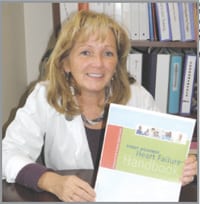Two New Sets Of Guidelines Intended To Improve Patient Safety
DES PLAINES, Ill. — Patient safety and specialty training are the focus of two new sets of critical care guidelines published in the January issue of Critical Care Medicine.
“As a profession, critical care is continually finding new ways to advance and improve safety and patient outcomes,” said Joseph E. Parrillo, M.D., editor in chief of Critical Care Medicine. “The two sets of guidelines published in this month’s issue are a good example of critical care’s pursuit of excellence.” The guidelines are for inter- and intra-hospital transport of critically ill patients and for critical care medicine training/continuing medical education.
Patient Transport
The transportation guidelines recommend that all hospitals have a formalized plan for intra- and inter-hospital transport developed by a multidisciplinary team. This plan should address pre-transport communication and coordination, transport personnel and equipment, patient monitoring during transport, and documentation. The plan should be evaluated and refined regularly using standard quality improvement processes.
Critically ill patients are at higher risk of increased illness and death during transport; however, risk can be minimized and outcomes improved, according to the guideline authors. Critically ill patients are generally transported based on an assessment of the potential benefits of transport weighed against the potential risks.
ritically ill patients are transported either within a hospital or to another facility to obtain additional technical, cognitive, or procedural care not available at the current location. The patient may be transferred to another hospital or transported to a diagnostic department, operating room, or a specialized care unit.
“The transport of critically ill patients carries inherent risks,” stated the experts. “These guidelines promote measures to ensure safe patient transport. Although both intra- and inter-hospital transport must comply with regulations, we believe patient safety is enhanced during transport by establishing an organized efficient process supported by appropriate equipment and personnel.”
The American College of Critical Care Medicine and the Society of Critical Care Medicine developed the guidelines for transport of critically ill patients, which are based on an Index Medicus search of the literature from January 1986 through October 2001, and backed by expert opinion. Experience and consensus opinion of practicing intensivist form the foundation of the guidelines, which were extensively reviewed prior to release.
Training and Continuing Medical Education
The second set of guidelines published in the January issue of Critical Care Medicine was created in response to the changing educational landscape. The American College of Critical Care Medicine created a task force to review and revise its current educational guidelines for critical care medicine. The task force consisted of members from across the specialties to ensure the resultant guidelines would be broadly applicable.
The new guidelines call for a continuum of education in critical care medicine, from residency through specialty training and later throughout practice. They will facilitate standardization of physician education in critical care medicine. This is the first guideline to approach physician education on a continuum basis.
“Critical care medicine trainees and faculty must acquire and maintain the skills necessary to provide state-of-the art clinical care to critically ill patients, to improve patient outcomes, optimize intensive care unit utilization, and continue to advance the theory and practice of [critical care medicine],” according to the guidelines.
According to the authors, medical education in the U.S. is undergoing a significant shift. Historically, medical education was designed to expose students to the concepts of practice within their chosen medical specialty. However, recently both the Accreditation Council for Graduate Medical Education and the Accreditation Council for Continuing Medical Education are mandating an outcomes approach and applying education science to medical education. Documented needs assessments followed by multi-modality instruction with documented competency are now required. This approach is expected to lead to better physicians and consequently better patient care.
“In addition to the change in scope from previously published [American College of Critical Care Medicine] education guidelines, the task force believed that the content of the guideline should also mature to be built on educational principles. . . the training should include a structured process that progressively transfers increasing levels of responsibility for decision-making, ensures continued training in the practical aspects of care, and provides training and experience in the administrative and management functions of the Intensive care unit,” declared the task force authors.
Critical Care Medicine is the official journal of the Society of Critical Care Medicine. It is the premier peer-reviewed, scientific publication in critical care medicine. Each issue presents critical care practitioners with clinical breakthroughs that lead to better patient care, the latest news on promising research, and advances in equipment and techniques.



Comments are closed.